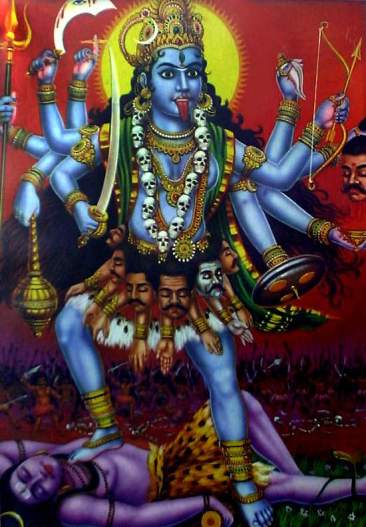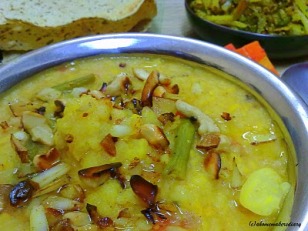If you read this blog often you might be wondering why I write so much about Riot Grrrl and how this could possible be important to food. If you are asking yourself that, then you have obviously not been paying attention. Our relationship to food is an expression of our social selves. When a woman leaves the kitchen all hell is bound to break loose.
Third-wave theory usually incorporates elements of queer theory; anti-racism and women-of-color consciousness; womanism; girl power; post-colonial theory; postmodernism;transnationalism; cyberfeminism; ecofeminism; individualist feminism; new feminist theory, transgender politics, and a rejection of the gender binary. Also considered part of the third wave is sex-positivity, a celebration of sexuality as a positive aspect of life, with broader definitions of what sex means and what oppression and empowerment may imply in the context of sex. For example, many third-wave feminists have reconsidered the opposition to pornography and sex work of the second wave, and challenge existing beliefs that participants in pornography and sex work are always being exploited. Third-wave feminism’s central issues are that of race, social class, and sexuality. However, there are also concerns of workplace issues such as the glass ceiling, sexual harassment, unfair maternity leave policies, motherhood—support for single mothers by means of welfare and child care and respect for working mothers and mothers who decide to leave their careers to raise their children full-time. – wikipedia
The recent incident in India of a young woman’s rape and murder may seem like just the passing news story, but I think it is deeper than that. You may mark my words and tell me I’m wrong in the future, but I think that India is going to explode with a social revolution that will rock the world – with girls at the front. What Gandhi did to progress the ideas of peace, Indian women will do to progress the ideas of equality.
The modern history of Feminism in India, up until WWII, paralleled that of the west. In many cases, such as with Gandhi’s social movement, it was even more progressive. Part of the problem with Feminism, or any movement of equality, is that it threatens the social paradigm and the backlash movement uses culture as a weapon. The strength of women’s movements is rooted in important mythological role models. For women in the West, we had only Judith and Mary, and our version of Feminism was, indeed, very close to the mythic role models we were given. Women in the East have a whole host of archetypal women. In the West our version of feminism was expressed through the conflict of gender for most of it’s history. It didn’t matter all that much whether you were an upper class woman or lower class women. In the East gender bias is very much expressed through the conflict of class. The cast you are born into matter immensely in regard to the kinds of challenges you will face because of your gender.
In the West, particularly the West Coast, we had little to no entrenched culture. While our mothers went to work, we were young women left to our own devises and the Third Wave of Feminism deeply reflects this DYI attitude. India has almost nothing BUT entrenched culture and their version of Feminism will rage as their mythic role models raged.
Third Wave Feminism is interestingly suited for the East because it does not rely on a portrait of patriarchy as the enemy; it acknowledges a concept of sex that is an ancient and underlying force in the Indian Psyche; it addresses issues such as colonialism ecology, and modernity that are already a part of the social dialog; it uses popular culture as a tool for connection and expression; and it does not deny or reject the traditional values of home and family that other feminist movements have. Of course, India will come up with it’s own wave, with it’s own flavor and terroire, but I doubt that the women who come here to marry MS boys and come to work for Infosys, MS, or Amazon themselves will fail to be influenced by their new surroundings.
There is a lot to be said on this topic. It is deep, complex and continually unfolding. All that’s really left to say today is watch out world – you had better hope for Sita’s and Radha’s, because I hear Kali can be a real bitch.
Bengali Khichuri
- 1 cup Rice (washed and soaked for half hour)
- 1 cup Masoor Dal (washed and soaked for half hour)
- 1 tbsp Channa Dal (washed and soaked for half hour)
- 1/2 cup Peas, shelled
- 1 Bay Leaf
- 3 Green Cardamoms
- 1″ stick Cinnamon
- 3 Cloves
- 1/2 tsp Cumin Seeds
- 10-12 Tiny Onions, peeled and diced
- 10-12 Baby Potatoes, washed, cleaned and diced
- 1 Carrot, diced
- 1 tsp Ginger, grated
- 1 tsp Garlic, grated
- 3-4 Green Chilies, finely chopped
- 1/2 tsp Turmeric Powder
- 1/2 tsp Garam Masala Powder
- Salt to taste
- 5 cups Water
- 4 tbsp Ghee
- Chopped Coriander Leaves, for garnishing
- Curd and Chutney, to serve
- To prepare khichuri, first drain dals and rice in a colander and keep them aside.
- Now partially crush the spices, cardamom, cinnamon and cloves.
- Take a large skillet and heat 3 tbsp ghee in it.
- Add cumin seeds, bayleaf and crushed spices to the skillet.
- Also add ginger, garlic and chilies. Stir and fry this mixture for some time.
- Now add onions and potatoes and fry for 2 minutes.
- Add other ingredients like carrot, peas, turmeric, garam masala and salt.
- Once this mixture is little cooked, add dals and rice and gently fry for 1 minute.
- Add water to the skillet.
- Stir the whole mixture and cover it. Leave it simmering till the cooking is done.
- Now add remaining ghee and sprinkle coriander leaves over it.
- Your khichuri is ready. Serve with curd and chutney.
In Hinduism, all goddesses are ultimately one: Devi. She takes different forms to allow us to comprehend Her multiple possibilities. One of the most powerful is Kali.
Kali’s blackness symbolizes Her comprehensive nature, as in black all colors merge. Just as all colors disappear in black, so all names and forms disappear in Her (Mahanirvana Tantra). Black can also represent the absence of color, signifying the nature of Kali as ultimate reality. Either way, Kali’s color symbolizes Her transcendence of all form.
Kali’s nudity has similar meaning. She is described as garbed in space or sky clad. In Her primordial nakedness, She is free from all covering of illusion. Her nudity represents totally illumined consciousness. Kali is the bright fire of truth, not hidden by the trappings of ignorance.
Kali is full-breasted. As our Mother, She creates endlessly. Her garland of fifty human heads, each representing one of the fifty letters of the Sanskrit alphabet, symbolizes knowledge and wisdom. Her girdle of severed human hands are the principal instruments of work and signify the action of karma. The binding effects of karma are overcome by devotion to Kali. She blesses devotees by cutting us free from the cycle of karma. Her white teeth are symbolic of purity and Her red tongue shows that She consumes all things and enjoys tasting what society regards as forbidden, her indiscriminate enjoyment of all the world’s flavors.
Kali’s four arms represent the complete circle of creation and destruction. Her right hands, making the sign of fear not and conferring boons, represent Her creative aspect. Her left hands, holding a bloodied sword and a severed demon head, represent her destructive aspect. The bloodied sword and severed head symbolize the destruction of ignorance and the dawn of knowledge. The sword is the sword of knowledge, that cuts through ignorance and destroys false consciousness (the severed head). Her three eyes represent the sun, moon and fire, with which She observes the past, present and future. This is the origin of the name Kali, the feminine form of Kala, the Sanskrit word for Time.
The cremation ground, Kali’s dwelling place, is where the five elements are dissolved. This symbolizes the dissolving of attachments, anger, lust and other emotions, feelings and ideas. The heart of the devotee is where this burning takes place and it is in her heart that Kali dwells. The devotee, under Kali’s influence, burns away all limitations and ignorance. This inner cremation fire in the heart is the fire of knowledge, which Kali bestows.
The image of Shiva lying under the feet of Kali shows Shiva as the passive potential of creation. Kali is Shakti, the universal feminine creative principle and energizing force. Kali empowers Shiva. Shakti is expressed as the i in Shiva’s name. Without the i, Shiva becomes Shva, which in Sanskrit means a corpse. So, without Shakti, Shiva is powerless or inert. This is the origin of the saying Shiva without Shakti is Shava.

